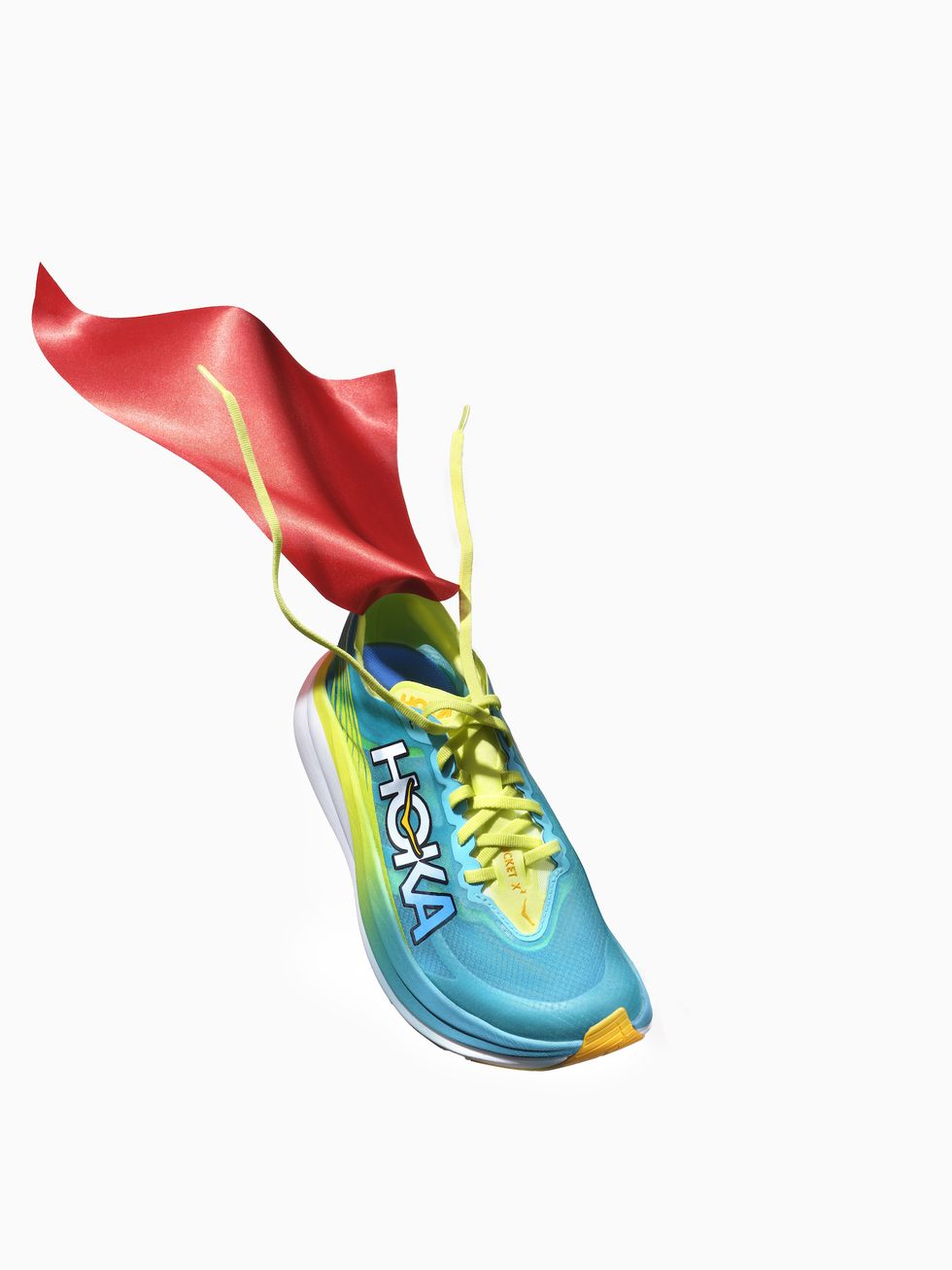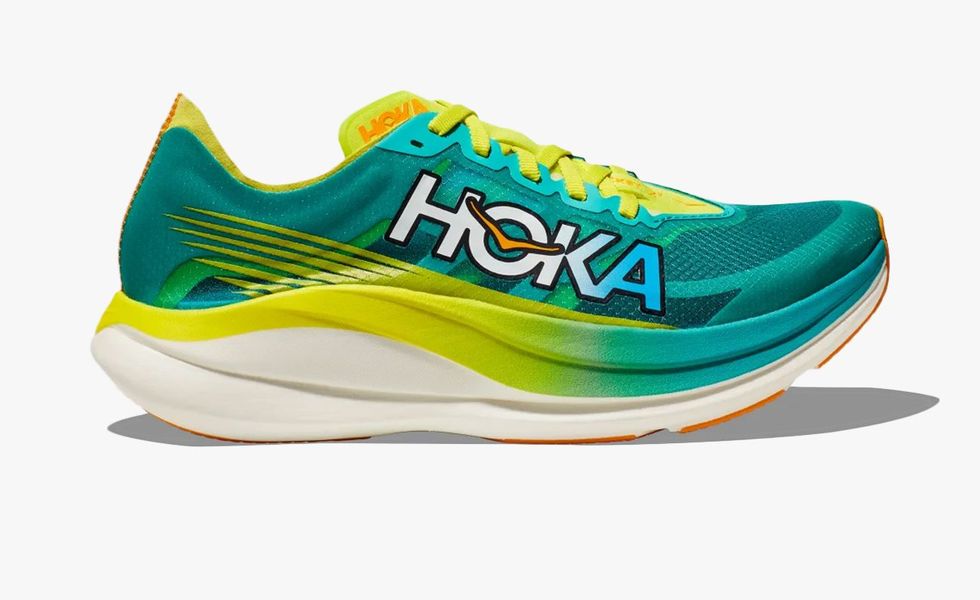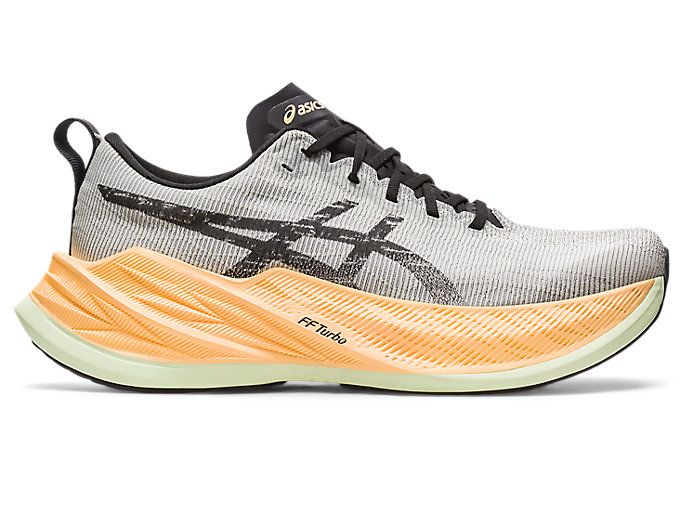IF YOU SPENT $250 or more on a pair of running shoes, you’d wear them for every long jog, turkey trot, and sprint to the supermarket, right? And that would go double if those extra-expensive sneakers were carbon-plate super shoes, right? Why? Because no footwear has their résumé: They’re responsible for world records and countless PRs for pros and average joes alike.
Every carbon-fiber shoe has the same basic components: a high stack of ultra-responsive midsole foam and a stiff carbon plate. This mix doesn’t just cushion you; it propels you forward on every stride. That extra boost can slash your race times—but use carbon-fiber shoes improperly and they open you to potential injury.
Top physical therapists are noticing a troubling trend: More and more patients with foot issues seem to be using carbon-plate shoes. “We see a lot of foot injuries here, like plantar injuries, a lot of post-tib injuries, peroneal injuries, all from what I see is people that train in these shoes,” says Men’s Health advisor Dan Giordano, D.P.T., C.S.C.S., a physical therapist at Bespoke Treatments in New York City.
There are few studies on the risks of running in carbon-plate shoes, but an opinion piece published in Sports Medicine detailed how the shoes may change your running mechanics, citing five track athletes who all dealt with foot injuries after using carbon-plate shoes.
None of this means you can never wear super shoes. But you do need to know exactly what they’re doing to your body—and have a plan for how and when to use them.
How Super Shoes Actually Work
You might think super shoes will instantly make you faster, like rocket boosters for your feet. But that’s not the case. Instead, they allow for greater running “economy”: You expend less oxygen with each step, meaning you’ll fatigue less quickly.
That’s because of how carbon-fiber shoes affect the final moments of every stride. According to Colleen Brough, D.P.T., an assistant professor at Columbia University and the founding director of the Columbia RunLab (where runners can have their form analyzed in depth), your “gait cycle” starts when any part of your foot first touches the ground. You then begin to shift your weight onto that foot—and a moment after that (called “midstance”) your foot is directly under your body’s center of mass. Then, in what’s called “terminal stance,” your heel starts rising and your foot winds up behind you, pushing off the ground before you swing it forward into the next step.
The combination of a carbon-fiber plate and hyper-responsive foam acts as you transition from midstance to terminal stance, Brough says, pushing you forward as you drive off the ground. The energy you save with that push helps keep you fresher later in your race.
But this only truly works if your running mechanics are good, says Brough. If you have trouble with hip extension (the powerful act of driving your thigh away from your front hip) or you have limited ankle mobility, you’ll “miss out on the benefit of that spring,” she says.
How Super Shoes Can Hurt You
The upside of carbon-fiber shoes transforming your mechanics is all those new personal records. The downside? Some of those mechanical changes carry over (and lead to muscle imbalances) when you’re wearing other shoes (or no shoes at all).
“What I think is happening is that possibly, [during] periods of time of training in these shoes, you stop using certain muscles, like an amnesia in the weirdest way,” says Giordano. When you switch out of carbon-fiber shoes, those muscles are forced to wake back up—in painful, sometimes injurious ways. “The last eight weeks,” he says, “you’ve been running without using that tissue, or without using it as much as you’re used to.”
There are other risks, too. Most super shoes have a high stack of cushy foam. Add the carbon plate pushing you forward with each step, little lateral support, and limited tread to keep the weight low and these shoes aren’t meant to turn corners or operate on rough terrain. “I had a patient who sprained her ankle running in an Ironman, because it was on a grass surface and she didn’t know that it was switched,” Giordano says.
How You Should Wear Super Shoes
Whether or not these shoes are right for you will depend on a few factors. Cost will be a big one, as will durability: Most carbon-fiber shoes are only effective to wear for around 250 or 300 miles. Those miles go by quickly, too. Nike running coach Jes Woods says an ideal marathon prep is about 16 weeks long, with beginners working their way up to averaging about 30 to 40 miles per week. Even on the low end of the spectrum, you could burn through a pair well before race day.
Because of their limited durability and all those injury risks, you need a smart training plan for your carbon-fiber shoes. Most shoe companies don’t expect you to wear them all the time, either, which is why they make an assortment of running shoes.
Mark Mendeszoon, D.P.M., a podiatrist, running coach, and running shoe store owner in Chardon, Ohio, says you should break in the shoes with normal, non-running wear first, walking around for a few days “to get a feel for them.” Then try them on a few short tempo runs—no more than three miles. Time with the shoes off is just as important, he says, and you should walk barefoot in your house or in grass “to strengthen and stretch out the foot and ankle muscles” after runs wearing super shoes.
Brough recommends limiting wear according to your needs. “The use of [the super shoes] should not only be limited based on running mechanics, but also limited to racing and speed work,” she says. Pull out the shoes only on race day and for select workouts, like speed interval sessions and tempo runs, not the slower 20-mile runs that will anchor most training plans.
And remember that you don’t need to wear them—especially if they don’t feel good on your feet. “I think a wrong mindset would be to get the shoes because you like the idea of the shoes,” says Brough.
Whether you want to nail a PR or you just want to try the speediest shoes on the road, you need to do what’s best for your feet. After all, you won’t be able to run very fast if you wind up in a walking boot.
Which Running Shoe Plan Is Best for You?
Your running-shoe setup should depend on your goals, but your budget might be the biggest deciding factor. Here are our picks for your best plan for whatever you can spend— plus, other top notch options.
The Do-Everything Shoe
Budget: Under $150 – Brooks Ghost 15
Brooks’s Ghost line features some of the most reliable, award-winning neutral shoes on the market, and they’re also one of Dr. Mark Mendeszoon’s top picks. If you’re not choosy, you can find an older model for even cheaper from Brooks or a secondary retailer like Zappos.
Training and Racing Shoe Duo
Budget: Under $400 – Saucony Endorphin Shift 3 + Hoka Carbon X3
Saucony’s Endorphin line is beloved by runners for its springy PWRRUN foam, and this version gives you a tall stack (sans plate) for everything from long runs to speed training sessions. The Hoka Carbon X3 is a more forgiving carbon-plate shoe with less bouncy foam, so you can run more miles in it than other comparable models (and it’s $50 to $75 less expensive).
Serious Athlete Stack (Long Run Shoe, Tempo/Interval Shoe, Race Shoe)
Budget: Unlimited – Asics Superblast + Craft CTM Ultra 3 + Nike Vaporfly 3
You get the best of every world here: a mega-cushioned long-run shoe (the Asics Superblast), a top-notch everyday trainer (Craft CTM Ultra 3), and arguably the fastest shoes on the road for race day (the Nike Vaporfly 3).
Brett Williams, a fitness editor at Men’s Health, is a NASM-CPT certified trainer and former pro football player and tech reporter who splits his workout time between strength and conditioning training, martial arts, and running. You can find his work elsewhere at Mashable, Thrillist, and other outlets.





























Comments are closed.